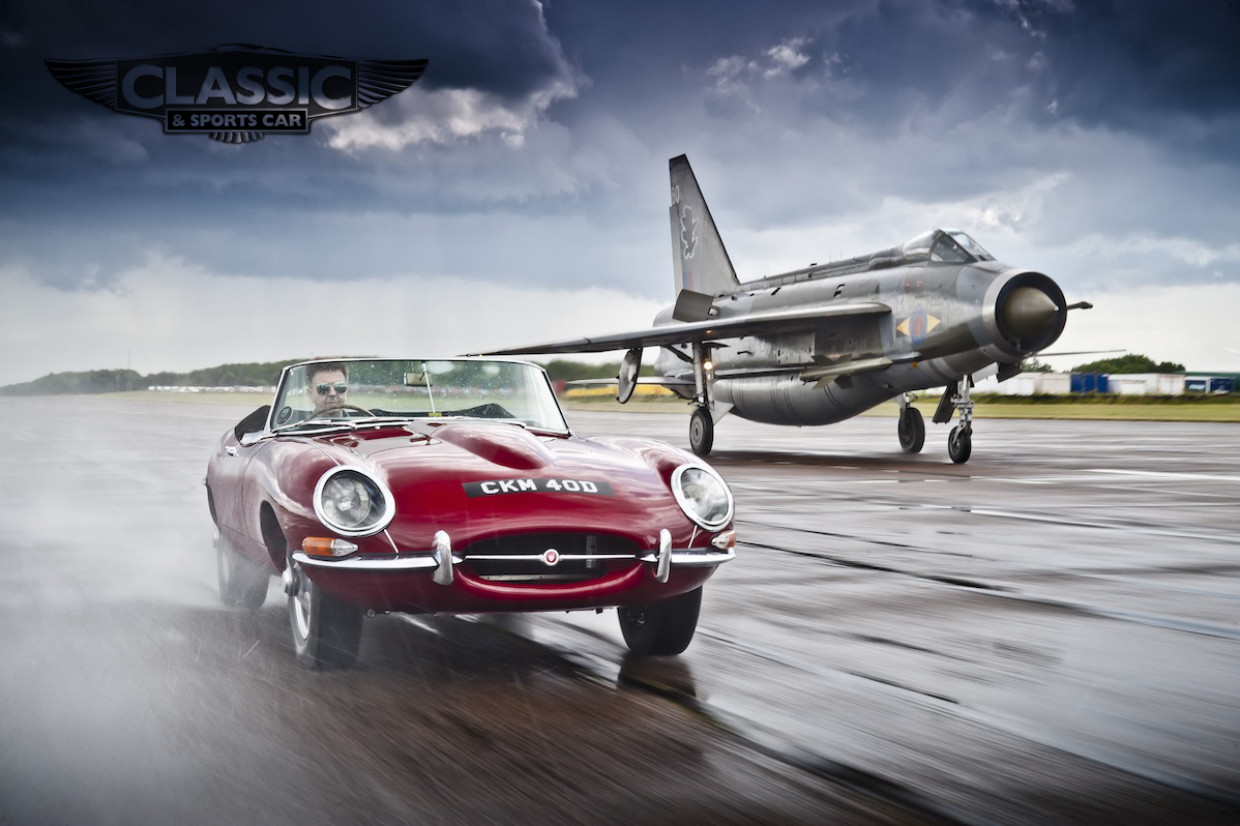
The driver tightens his grip around the thin, wood-rim wheel and hunches slightly, shielding from the wind behind the broad, shallow expanse of ’screen. Foot hard down in second, he senses the undulating bonnet rise, the needles flickering on the two Smiths dials in his lower vision, and the accelerating blur of the English countryside. If anyone had been standing in those verdant fields, they would have seen a spectacular sculpture at speed and heard the unmistakable bray and crackle of the straight-six hard at work. ‘This is what it’s all about,’ he thinks. ‘This is why everybody loves the E-type.’
With a hint of bravura, he double-declutches down the gears and peels off the lane to the airfield gatehouse. A nod to security has the boom raised, and he heads for a hangar on the far side of the runway. Cursing the lacklustre British summer, he pulls up outside and switches off, the abrupt silence amplifying the emptiness of grass and asphalt around him.
Behind the large retractable doors sits arguably the most fearsome fighter plane in the history of the Royal Air Force: an interceptor, a nation’s protector in a nuclear era. Nicknamed ‘The Frightening’, it’s capable of more than twice the speed of sound and is as agile as a Jaguar of the four-legged variety. Like the E-type, it represents the best of 1960s British technology but, rather than aiming to seduce and entertain like the sports car, its sole task is to repel any advance from behind the Iron Curtain. At its core, it has been designed to kill.






